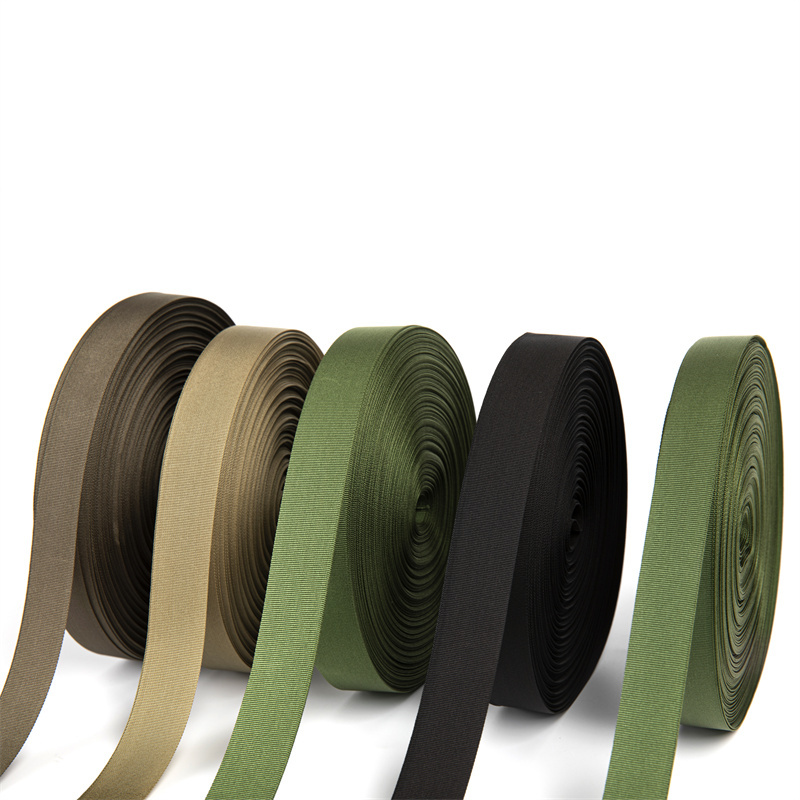Understanding the Different Types of Military Webbing Materials: A Comprehensive Guide
Understanding the Different Types of Military Webbing Materials
Table of Contents
1. Introduction to Military Webbing Materials
2. What is Webbing?
3. Types of Military Webbing Materials
3.1 Nylon Webbing
3.2 Polyester Webbing
3.3 Cotton Webbing
3.4 Aramid Webbing
3.5 Webbing Systems and Their Applications
Aug 07,2025

Understanding the Different Types of Military Webbing Materials
Table of Contents
- 1. Introduction to Military Webbing Materials
- 2. What is Webbing?
- 3. Types of Military Webbing Materials
- 3.1 Nylon Webbing
- 3.2 Polyester Webbing
- 3.3 Cotton Webbing
- 3.4 Aramid Webbing
- 3.5 Webbing Systems and Their Applications
- 4. Advantages and Disadvantages of Different Webbing Materials
- 5. Choosing the Right Military Webbing
- 6. Maintenance and Care of Webbing Materials
- 7. Future of Military Webbing Materials
- 8. Frequently Asked Questions
- 9. Conclusion
1. Introduction to Military Webbing Materials
Military webbing materials are an essential component in various applications, including tactical gear, backpacks, and harnesses. These materials provide the strength, durability, and flexibility necessary for rigorous use in demanding environments. In this guide, we will delve deep into the various types of military webbing materials, their unique properties, and how to select the appropriate option for specific needs.
2. What is Webbing?
Webbing is a narrow fabric strip commonly made from synthetic fibers, designed for high strength and durability. It is woven in a tight pattern, making it resistant to abrasion, tearing, and environmental factors. Webbing is used extensively in the military for a broad range of applications, including securing loads, making harnesses, and creating straps for equipment.
The Importance of Webbing in Military Applications
The military relies on webbing for its multifunctional properties. The ability to support heavy loads while being lightweight and resistant to weather elements makes webbing an indispensable component of military gear. Additionally, webbing can be customized in terms of color and design, enhancing camouflage and tactical effectiveness.
3. Types of Military Webbing Materials
Understanding the various types of webbing materials available is crucial for making informed choices. Below are the most commonly used types of military webbing materials:
3.1 Nylon Webbing
Nylon webbing is one of the most popular choices in military applications due to its strength and resilience. It is lightweight, resistant to mildew, and has low moisture absorbency.
Key Properties of Nylon Webbing
- **High tensile strength**: Can withstand significant loads without breaking.
- **Elasticity**: Offers some stretch, providing comfort when used in straps and harnesses.
- **Resistance to UV rays**: Durable in outdoor environments with high sun exposure.
3.2 Polyester Webbing
Polyester webbing is another widely used material in military applications. It is known for its durability and resistance to abrasion.
Key Properties of Polyester Webbing
- **High resistance to UV and chemicals**: Ideal for diverse environmental conditions.
- **Low stretch**: Provides stability and support for securing loads.
- **Colorfastness**: Retains its vibrant colors even after prolonged exposure to sunlight.
3.3 Cotton Webbing
Cotton webbing, although less common than synthetic options, offers a unique set of advantages, primarily for less demanding applications.
Key Properties of Cotton Webbing
- **Biodegradable**: More environmentally friendly compared to synthetic options.
- **Breathability**: Provides comfort in applications such as harnesses and straps.
- **Softness**: Gentle on the skin, making it ideal for wearables.
3.4 Aramid Webbing
Aramid webbing is a high-performance option commonly used in military applications requiring extreme durability and heat resistance.
Key Properties of Aramid Webbing
- **Heat resistance**: Can withstand high temperatures without losing structural integrity.
- **Cut and abrasion resistance**: Suitable for environments with sharp objects or rough surfaces.
- **Low weight**: While tough, it remains lightweight, making it useful for tactical applications.
3.5 Webbing Systems and Their Applications
Webbing systems encompass various configurations and uses, such as MOLLE (Modular Lightweight Load-carrying Equipment) systems, which allow for modular attachment of pouches and equipment. Understanding these systems is vital for optimizing the effectiveness of gear.
4. Advantages and Disadvantages of Different Webbing Materials
When considering webbing materials, it is essential to weigh the advantages and disadvantages.
Advantages
- **Strength and Durability**: Most webbing materials are designed to handle heavy loads.
- **Versatility**: Different types can be used across various military applications.
- **Customization**: Options for color and design enhance tactical functionality.
Disadvantages
- **Weight**: Some materials, like nylon, can be heavier compared to alternatives.
- **Cost**: High-performance materials may come at a premium price.
- **Environmental Impact**: Synthetic materials, while durable, are not biodegradable.
5. Choosing the Right Military Webbing
Selecting the appropriate webbing material involves several considerations:
Assessing Your Needs
Determine the specific applications and environments where the webbing will be used. Factors such as weight capacity, exposure to elements, and required flexibility should guide your choice.
Testing and Durability
Before making a final decision, testing the webbing under simulated conditions can provide insights into its performance and limitations.
6. Maintenance and Care of Webbing Materials
Proper care for webbing materials ensures longevity and performance.
Cleaning
Regular cleaning is essential to maintain the integrity of webbing. Use mild detergent and warm water for washing. Avoid harsh chemicals that may degrade fibers.
Storage
Store webbing in a dry, cool place to prevent mildew and deterioration. Avoid exposure to direct sunlight when not in use.
7. Future of Military Webbing Materials
Advancements in textile technology continue to influence the development of military webbing materials. Innovations such as lightweight, high-strength composites and eco-friendly options are emerging, promising to enhance performance while reducing environmental impact.
8. Frequently Asked Questions
1. What is the strongest webbing material available?
**Nylon** is often considered the strongest webbing material, but **aramid** webbing offers superior heat and abrasion resistance.
2. Can webbing materials be customized for specific military needs?
Yes, many manufacturers offer customization options for color, length, and design to meet specific military requirements.
3. How do I know which webbing material is best for my application?
Assess the environmental conditions, load requirements, and any specific tactical needs to determine the best webbing material.
4. Are there eco-friendly webbing options available?
Yes, some companies are developing biodegradable webbing materials, primarily from natural fibers such as cotton.
5. How should I care for and maintain my military webbing?
Regularly clean your webbing with mild detergent and store it in a dry, cool place away from direct sunlight to ensure long-lasting performance.
9. Conclusion
Understanding the different types of military webbing materials is crucial for anyone involved in military operations, tactical gear development, or outdoor activities. From nylon and polyester to cotton and aramid, each material offers unique properties suited for specific applications. By assessing the advantages and disadvantages, as well as considering maintenance and care, you can make informed decisions that enhance performance and durability. As technology evolves, the future of military webbing materials promises even more innovative and sustainable solutions. With this comprehensive guide, you are now better equipped to choose the right webbing material for your needs.
PREVIOUS:
Related Posts
Contact Us
E-mail:
Phone/WeChat:
Factory Address:
No. 601 ShiXing Road, Jimei District, Xiamen, 361024, China







